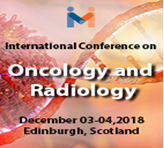Pathophysiology of Chronic Obstructive Pulmonary Disease
Chronic obstructive pulmonary disease (COPD) is a common non-communicable disease affecting people in all parts of the world. This irreversible condition is slowly progressing and causes significant morbidity and mortality. General manifestations include shortness of breath, cough, sputum production, airway obstruction resulting in decreased expiratory air flow, abnormal breath sounds, barrel chest, pulmonary hypertension, cor pulmonale, peripheral edema, and increased central venous pressure. Severity of COPD is determined by measuring forced expiratory volume in one second (FEV1). COPD is associated with development of chronic bronchitis, emphysema, and bronchiolitis, with relative contribution of each differing between patients. Main causes of COPD include cigarette smoking, exposure to air pollutants, occupational exposure, and genetic deficiency of alpha-1 antitrypsin (A1AT). COPD is associated with persistent inflammatory process, involving activation of many types of immune cells mediated by different immune mediators. Several pro-inflammatory cytokines play important roles during development and progression of COPD. Progression of COPD is associated with amplified immune inflammatory response, resulting in mucous hypersecretion, tissue destruction and remodeling, and fibrosis. These changes result in irreversible loss of pulmonary functions. Imbalances between proteases and anti-proteases, and between oxidants and anti-oxidants play important roles during development and progression of pathophysiological changes in COPD. Basic principles of COPD treatment based on present knowledge of pathophysiology of COPD include cessation of smoking, β2 and anticholinergic bronchodilators, inhaled steroids, mucolytics, supplemental oxygen, antibiotics for pulmonary infections, intravenous A1AT in patients with A1AT deficiency, and vaccinations against influenza, Pneumococcus, and hepatitis. Further understanding of pathophysiological mechanisms of COPD, especially relationships between known inflammatory mediators and specific anti-inflammatory mediators, such as interleukin (IL)-10 could contribute to significant slowdown of development and progression of COPD and development of effective treatment in some sub-populations of patients.



